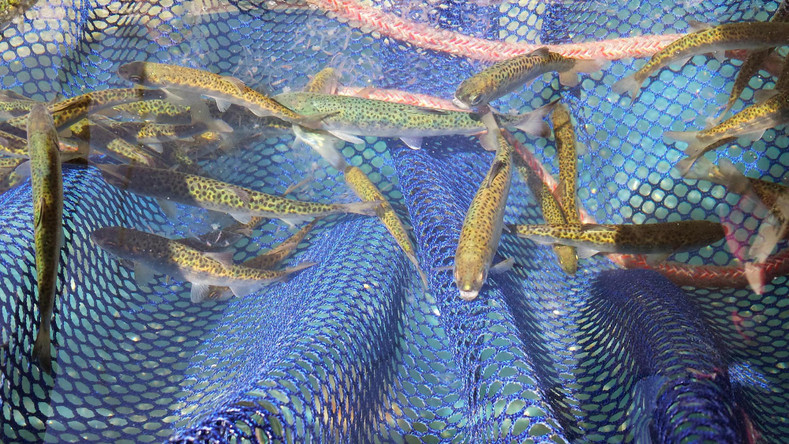Artificial Intelligence could save declining Salmon populations

"One of the biggest mysteries among people working on salmon recovery in Puget Sound and the Salish Sea is what happens to juvenile fish once they head for the ocean. Survival rates of Chinook, Coho and Steelhead have all declined since the 1980s, but resource managers don’t know why.
A new grant from Microsoft is using artificial intelligence to greatly improve the computer models used to tackle the question. (Artificial Intelligence could help salmon recovery)
Morzaria-Luna, who works with field data from all over the region, says the recent grant from Microsoft has vastly improved the speed and capability of their modeling. Using artificial intelligence tools such as machine learning, they can dig in to much more complicated questions, for example comparing hundreds of slightly different answers to one question about available food and its effects on survival rates."
Due to environmental changes and many years of unregulated fishing, wild-caught fish roe has become an increasingly rare delicacy. In the US, there are only a few different species available to harvest wild roe from, and legally only one species of sturgeon that is allowed to be fished for its true caviar.
Salmon and trout species, famous for the red caviar they produce, are being farm-raised more than ever these days to meet increasing market demand and compensate for declining wild populations. While fish farming is a sustainable means to produce meat and caviar, and can reduce the need for fishing wild populations, biologists and environmentalists alike claim that both the industry and planet are more sustainable when wild species numbers flourish.
We can hope that with more government funding and private grants, such as the Microsoft grant mentioned in this article, advanced technology will become readily available for conservationists to use in wild fish population recovery and preservation. Being a source of the delicacies we enjoy in addition to a considerable portion of the food we eat, wild species must survive and thrive in their natural habitat in order for us to keep our standard of living on this planet.
Source: Bellamy Pailthorp, KNKX
Photo Credit: KNKX



 (888) 268-8780
(888) 268-8780
